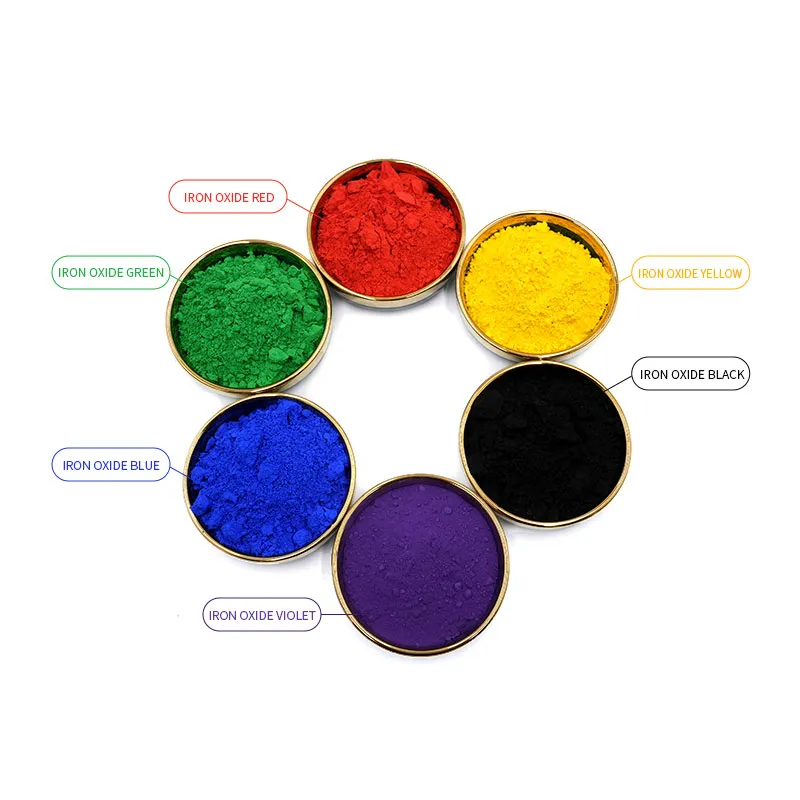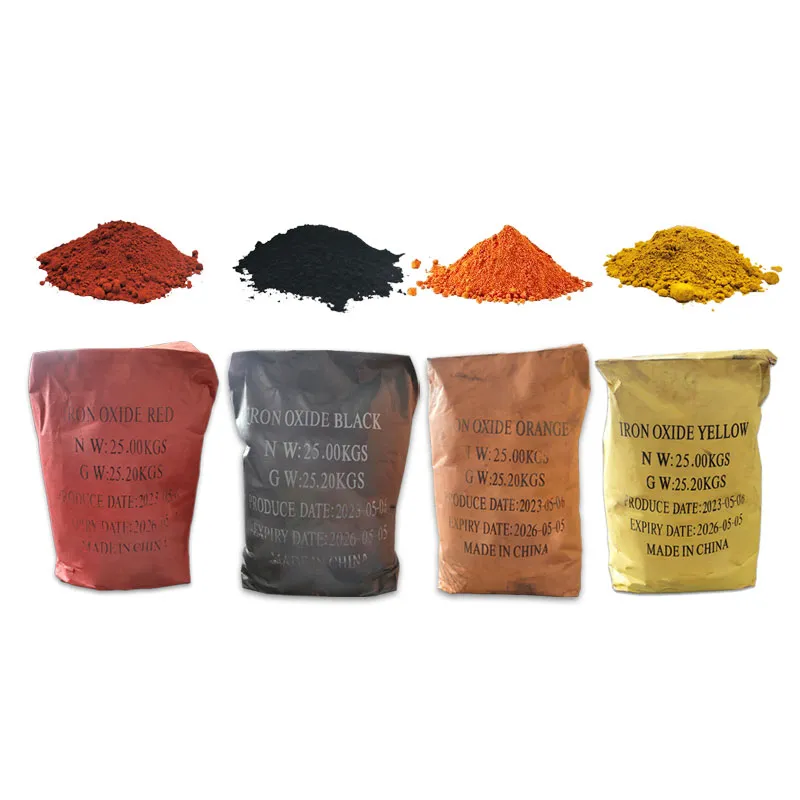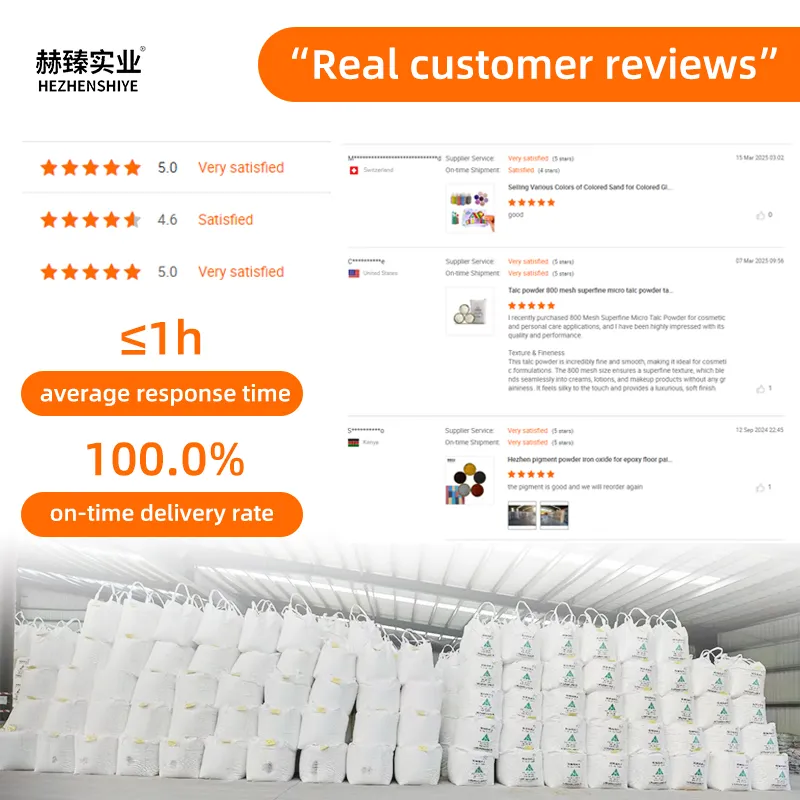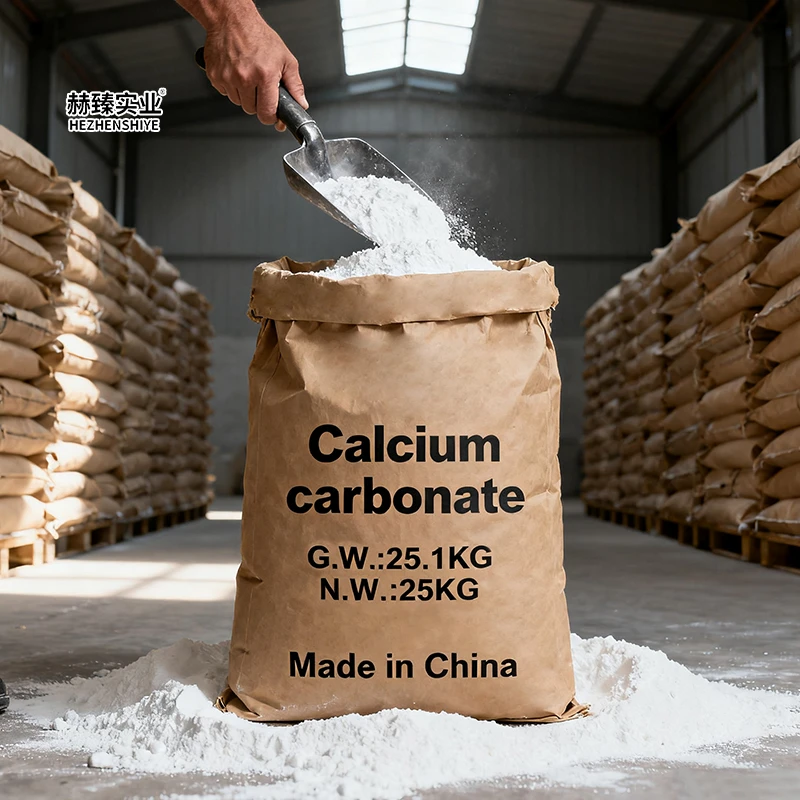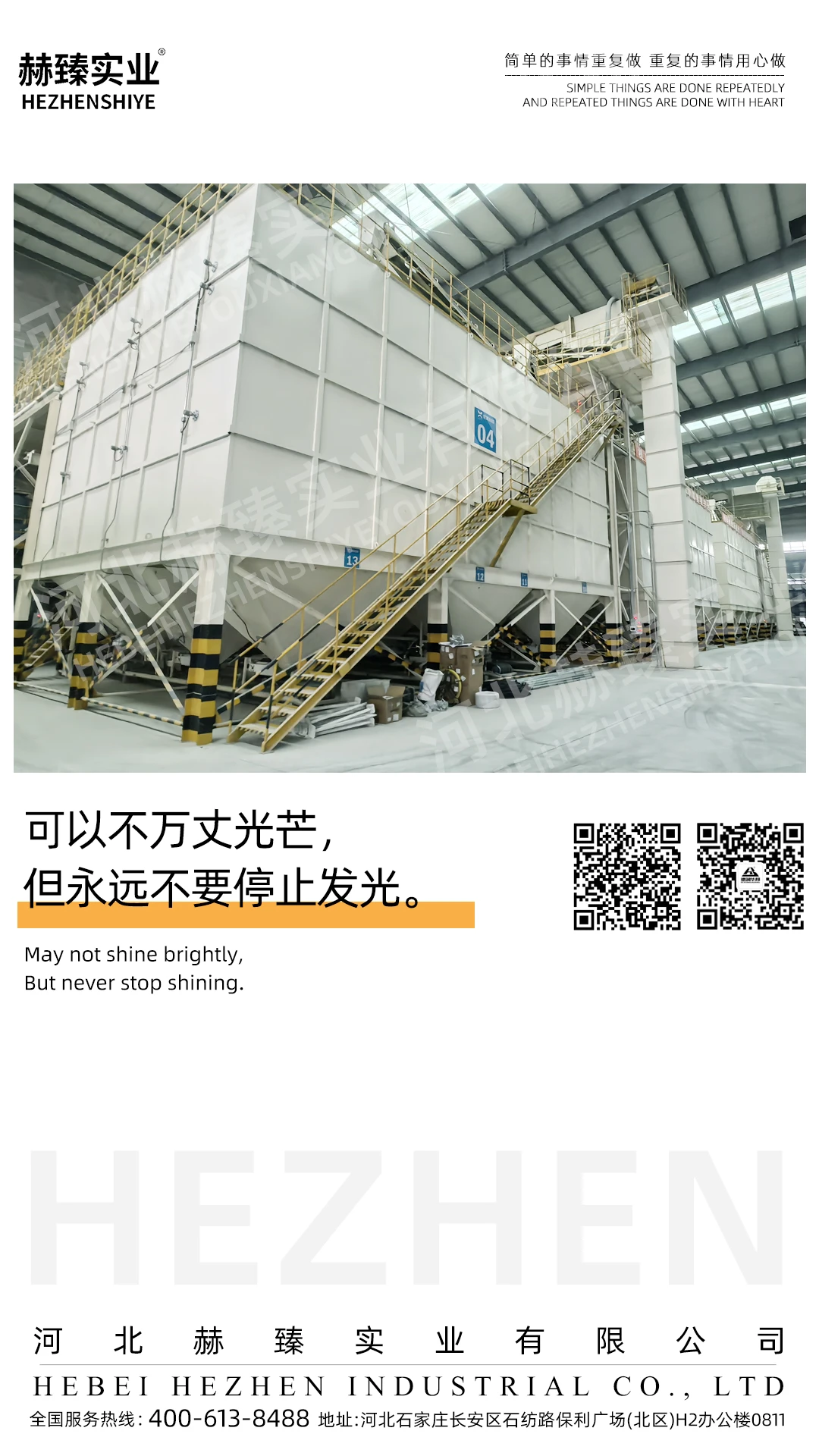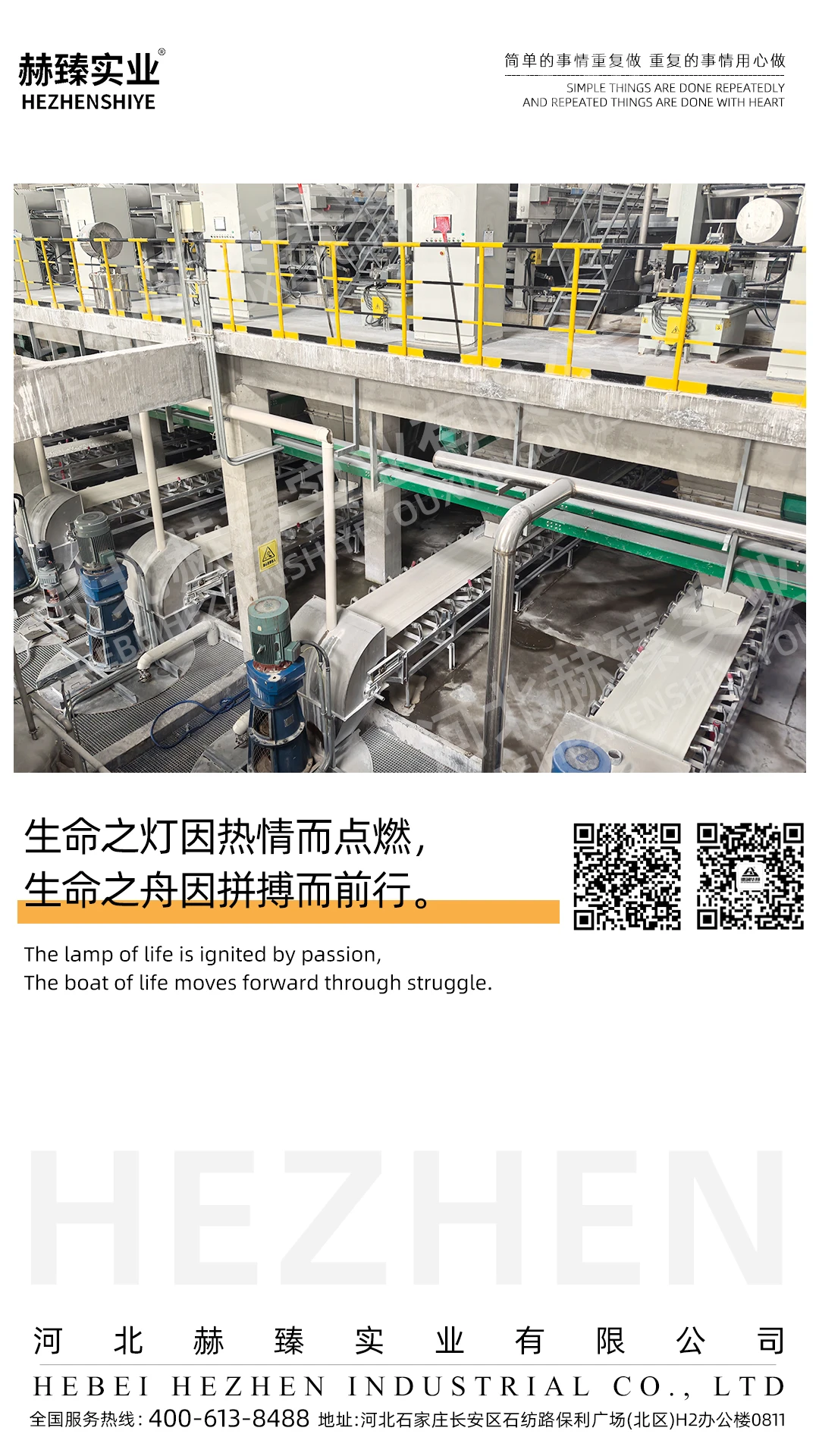Processing of Iron Oxide Pigments is precision-driven journey that honors natural properties while enhancing usability for diverse applications. For natural pigments, extracted iron ore undergoes series of carefully calibrated steps to isolate and refine color-rich components. Mined ore is first crushed into coarse particles using mechanical crushers, then washed repeatedly to remove soil, sand, and other impurities that could dilute color or compromise performance. Subsequent grinding refines particles into fine powders, with particle size adjusted based on intended use—finer powders for paints and coatings, coarser grains for concrete and masonry. Skilled technicians sort powders by color intensity using visual inspection and spectrophotometric analysis, ensuring each batch maintains uniform hue. Synthetic pigments follow different but equally meticulous process: pure iron compounds (such as iron sulfate or iron chloride) are mixed with water and heated in controlled environments to trigger oxidation. Resulting iron oxide is filtered, dried, and milled into powders with consistent particle distribution. Critical to all processing stages is absence of artificial dyes, stabilizers, or toxic additives—color of iron oxide pigments comes entirely from iron’s natural oxidation states, ranging from vibrant reds (from iron(III) oxide) and warm yellows (from iron(III) hydroxide oxides) to rich browns (from mixed iron oxides) and deep blacks (from magnetite, naturally occurring iron oxide). This purity ensures pigments blend seamlessly with diverse base materials, from liquid paints and coatings to solid concrete and mortar, without altering structural integrity or introducing harmful substances.
Core characteristics of Iron Oxide Pigments—color stability, durability, compatibility, and eco-friendliness—make them indispensable across industries, setting them apart from organic or synthetic alternatives. Color stability stands as most defining trait: unlike organic pigments that fade under prolonged UV exposure or chemical exposure, iron oxide pigments retain hues for decades, even in harsh environments. This resilience is due to iron oxide’s chemical inertness—molecules resist breaking down when exposed to sunlight, rain, temperature fluctuations, or common industrial chemicals. For example, red iron oxide pigments used in exterior house paints maintain vibrant tone for over 20 years, while organic red pigments might fade to pale pink within five years. Durability extends beyond color retention: iron oxide pigments integrate with base materials at molecular level, enhancing surface hardness and resistance to wear. When added to concrete, they increase abrasion resistance, making pigmented concrete ideal for high-traffic areas like shopping mall floors or sidewalks. Compatibility is another key strength—iron oxide pigments mix effortlessly with water-based and oil-based paints, epoxy coatings, concrete, mortar, and even plastics and rubber. This versatility allows manufacturers to use single pigment type across multiple product lines, reducing inventory costs and simplifying production processes. Eco-friendliness further distinguishes iron oxide pigments: natural variants require minimal processing, while synthetic variants use recycled iron byproducts from steel manufacturing, reducing waste and carbon footprint. Many iron oxide pigments meet strict environmental certifications, including EU ECOLABEL and US Green Building Council’s LEED criteria, making them preferred choices for sustainable construction and manufacturing projects.
Construction industry relies heavily on Iron Oxide Pigments to add color, durability, and aesthetic value to structural and decorative elements. Concrete coloring stands as one of most common applications, with iron oxide pigments transforming plain gray concrete into vibrant, long-lasting surfaces. Red iron oxide pigments tint concrete in warm terracotta tones for residential driveways and patio floors, creating inviting outdoor spaces that complement landscape design. Yellow iron oxide pigments are used in commercial concrete walkways and plazas, evoking sunlit warmth that enhances pedestrian comfort. Brown iron oxide pigments find use in decorative concrete pavers for parks and gardens, their earthy hues blending with natural surroundings. Black iron oxide pigments, meanwhile, are favored for high-end architectural concrete, tinting exterior cladding and interior accent walls in sleek, modern tones that pair well with glass and steel. Beyond concrete, iron oxide pigments enhance mortar and stucco applications: red and brown pigments add rustic charm to exterior stucco on cottage-style homes, while gray-tinted pigments (from mixed iron oxides) create understated elegance for contemporary buildings. Construction professionals value that pigmented materials require no additional sealing or maintenance to preserve color, reducing long-term project costs. Notable example is shopping mall in coastal city that used brown iron oxide pigments to tint exterior concrete cladding—after 15 years of exposure to saltwater spray and intense sunlight, cladding retains rich brown hue with no signs of fading or degradation.
Coating and paint industries depend on Iron Oxide Pigments for ability to deliver consistent color and durable protection across diverse surfaces. Architectural paints, both interior and exterior, rely heavily on these pigments to create popular shades—warm beiges from yellow and brown iron oxide blends, soft terracottas from red iron oxides, and deep charcoals from black iron oxides. Exterior paints formulated with iron oxide pigments resist peeling, cracking, and fading, even in extreme climates: homes in desert regions use yellow iron oxide-tinted paints that reflect sunlight and retain color despite high temperatures, while homes in rainy regions use red iron oxide-tinted paints that repel moisture and prevent mold growth. Industrial coatings, designed to protect machinery, equipment, and infrastructure, also leverage iron oxide pigments’ durability. Metal structures like bridges and pipelines are coated with iron oxide-tinted paints that resist corrosion—brown iron oxide pigments are particularly effective, as they form protective barrier against rust and chemical exposure. Automotive coatings use iron oxide pigments in undercoats and primer paints, enhancing adhesion and providing rust protection before topcoats are applied. Even specialty coatings, such as those used on shipping containers and offshore platforms, rely on iron oxide pigments to withstand saltwater, extreme winds, and constant wear. Paint manufacturers note that iron oxide pigments’ high tinting strength—meaning small amounts deliver intense color—reduces material costs and minimizes waste, making them cost-effective choices for large-scale production.
Decorative and design industries use Iron Oxide Pigments to create unique, visually striking elements that balance aesthetics and functionality. Interior design projects frequently incorporate these pigments into wall paints, wallpaper, and decorative finishes. For example, boutique hotels use red iron oxide-tinted paints in lobby accent walls to create bold focal points, while residential living rooms use blended yellow and brown iron oxide paints to achieve soft, warm neutrals that complement wooden furniture and natural textiles. Decorative concrete artists use iron oxide pigments to create custom designs—stained concrete floors with marbled effects from blended red and brown pigments, or decorative tiles with geometric patterns in yellow and black pigments. Furniture manufacturing also benefits from iron oxide pigments: wooden furniture is stained with pigmented finishes in rich browns and ambers, while plastic furniture uses iron oxide pigments to add color that resists fading from indoor and outdoor use. Even textile and paper industries use iron oxide pigments in specialty applications—natural fiber fabrics for outdoor cushions are dyed with iron oxide pigments that resist sun damage, and decorative paper for packaging uses these pigments to create earthy, eco-friendly designs. Interior designers value that iron oxide pigments’ natural hues align with trending design styles, from rustic farmhouse (warm browns and reds) to modern minimalist (subtle beiges and grays), ensuring versatility across projects.
Industrial manufacturing sectors beyond construction and coatings integrate Iron Oxide Pigments to enhance product performance and appearance. Plastics and rubber manufacturing use these pigments to add color and improve durability: yellow iron oxide pigments tint plastic garden furniture, making it resistant to UV damage and fading; black iron oxide pigments reinforce rubber tires, increasing wear resistance and extending lifespan. Ceramic and glass industries use iron oxide pigments to create decorative effects—ceramic tiles are glazed with red and brown iron oxide pigments to mimic natural stone, while glass art uses these pigments to create stained glass in warm, earthy tones. Building materials like roof tiles and siding use iron oxide pigments to add color that withstands weathering: red iron oxide-tinted roof tiles are staple in residential construction, retaining vibrant color for decades despite rain, snow, and sunlight. Even electronics manufacturing uses iron oxide pigments in specialty applications—heat-resistant plastics for electronic enclosures are tinted with black iron oxide pigments that dissipate heat and protect internal components. Manufacturers across sectors appreciate that iron oxide pigments are non-toxic and safe for consumer products, meeting global safety standards for toys, food packaging, and household items.
Public infrastructure and municipal projects leverage Iron Oxide Pigments to create durable, aesthetically pleasing spaces that serve communities for generations. Road and highway construction uses iron oxide pigments to tint concrete barriers and median strips in bright reds and yellows, increasing visibility and improving traffic safety. Sidewalks and crosswalks use white iron oxide pigments (from iron oxide hydroxides) to create reflective stripes that enhance pedestrian safety at night. Public parks and recreational areas use iron oxide pigments in decorative concrete elements—yellow-tinted benches, brown-tinted pathways, and red-tinted playground surfaces—that resist wear from heavy use and weathering. Municipal buildings, such as libraries and community centers, use iron oxide-tinted stucco and paints to create welcoming exteriors: soft beige from blended yellow and brown pigments conveys warmth, while deep gray from black iron oxide pigments projects professionalism. Even wastewater treatment facilities use iron oxide pigments in protective coatings for tanks and pipes, as pigments resist corrosion from chemical-treated water. Municipal engineers prioritize iron oxide pigments for public projects because of their low maintenance requirements—pigmented surfaces rarely need repainting or replacement, reducing taxpayer costs and minimizing disruption to communities.
Sustainability and environmental responsibility are central to Iron Oxide Pigments’ appeal, aligning with global efforts to reduce carbon footprints and promote eco-friendly manufacturing. Natural iron oxide pigments are extracted using low-impact mining methods that minimize ecosystem disruption—miners use selective digging to avoid damaging surrounding vegetation and wildlife habitats, and excavated areas are restored with native plants after extraction. Synthetic iron oxide pigments are produced using recycled iron byproducts from steel mills, diverting waste from landfills and reducing need for virgin iron mining. Production processes for both natural and synthetic pigments use minimal energy: natural pigments require only crushing, washing, and grinding, while synthetic pigments use energy-efficient heating and oxidation methods. Many manufacturers power their facilities with renewable energy sources like solar or wind, further reducing carbon emissions. Iron oxide pigments also contribute to sustainability in end-use applications: pigmented concrete and coatings have longer lifespans than non-pigmented alternatives, reducing waste from frequent replacements. Additionally, their natural hues reduce need for artificial lighting in interior spaces—warm yellow and beige pigments reflect natural light, lowering energy consumption for lighting. These sustainability traits have made iron oxide pigments popular choices for green building projects, including LEED-certified offices, eco-friendly homes, and sustainable urban developments.
Application techniques for Iron Oxide Pigments vary by industry and base material, but all prioritize uniform color distribution and optimal performance. In paint and coating production, pigments are mixed into base formulations using high-speed dispersers that break up agglomerates and ensure even distribution. Amount of pigment added depends on desired color intensity—typically between small and moderate percentages of total formulation. For concrete and mortar, pigments are mixed directly into wet concrete before pouring, with mechanical mixers ensuring consistent color throughout batch. It’s critical to add pigments to wet concrete rather than dry, as this prevents uneven coloring or streaking. For plastics and rubber, pigments are compounded with raw materials during extrusion or molding, with temperature-controlled processes ensuring pigments integrate fully without degradation. In decorative applications like stained concrete, pigments are applied as stains or dyes, either by brushing, rolling, or spraying, then sealed to lock in color. DIY enthusiasts and small-scale users can purchase iron oxide pigments in powder form, which are easy to mix with water-based paints or concrete mixes at home. Manufacturers provide detailed application guides, including recommended pigment-to-base ratios and mixing techniques, to ensure users achieve consistent results. Cleanup is simple—pigment dust washes away with water, and mixing equipment requires no harsh solvents, making iron oxide pigments accessible to both professionals and hobbyists.
Quality control is cornerstone of Iron Oxide Pigment production, ensuring consistency, performance, and safety across batches. Manufacturers maintain state-of-the-art laboratories staffed by certified technicians who conduct rigorous tests at every stage of production. Raw material inspection begins with analyzing iron ore or recycled iron compounds for purity and color intensity—samples are tested using X-ray fluorescence spectrometers to verify mineral composition and ensure no toxic impurities are present. In-process testing monitors particle size, moisture content, and color consistency—real-time sensors track these parameters during grinding and milling, allowing technicians to adjust processes if deviations occur. Final product testing includes color matching (using spectrophotometers to ensure batches match standard shades), weather resistance testing (exposing pigmented samples to UV light and moisture to simulate years of outdoor exposure), and compatibility testing (mixing pigments with various base materials to ensure adhesion and performance). Every batch of iron oxide pigments is accompanied by detailed quality report that includes test results, batch number, and production date, providing transparency for customers and ensuring compliance with industry standards. Manufacturers also conduct regular third-party audits to verify quality control processes, earning certifications from organizations like ISO and ASTM that validate their commitment to excellence.
Cultural and historical significance of Iron Oxide Pigments adds depth to their modern use, connecting contemporary design to ancient traditions. For millennia, civilizations have used natural iron oxide pigments for art and construction: ancient Egyptians used red iron oxide (known as hematite) in wall paintings and cosmetics; Roman architects added iron oxide pigments to concrete for Colosseum, enhancing durability and color; medieval artists used brown iron oxide pigments in illuminated manuscripts and frescoes. These historical uses highlight iron oxide pigments’ timeless appeal and durability—many ancient artworks and structures retain their iron oxide-based colors to this day. In modern cultural projects, iron oxide pigments are used to restore historical buildings and artworks: restoration of medieval cathedrals uses natural red iron oxide pigments to match original frescoes, while renovation of ancient Roman ruins uses pigmented concrete that replicates color and texture of original structures. Cultural centers and museums also use iron oxide pigments in exhibits that celebrate traditional art—for example, museum showcasing Native American art uses iron oxide pigments to recreate traditional rock paintings, honoring ancient techniques while ensuring durability for modern audiences. This connection to history and culture makes iron oxide pigments more than just industrial materials—they are carriers of human creativity and tradition.
Innovation in Iron Oxide Pigment technology continues to expand their applications and enhance their performance. Manufacturers are developing microfine iron oxide pigments with particle sizes as small as one micron, which disperse more evenly in thin coatings and deliver more intense color with less pigment. Nano-sized iron oxide pigments are being researched for advanced applications, such as self-cleaning coatings that use iron oxide’s photocatalytic properties to break down dirt and pollutants. Water-based iron oxide dispersions have been developed for eco-friendly paints and coatings, eliminating need for solvent-based carriers and reducing volatile organic compound (VOC) emissions. Color-matching technology has also advanced, with digital spectrophotometers and AI-powered software allowing manufacturers to create custom iron oxide pigment blends that match exact customer specifications. Innovations in packaging—such as moisture-resistant, recyclable containers—ensure pigments remain stable during storage and transportation. These advancements are driven by growing demand for high-performance, sustainable materials, and they position iron oxide pigments to remain at forefront of industrial and design innovation for years to come.
Market demand for Iron Oxide Pigments continues to grow globally, driven by expansion in construction, automotive, and packaging industries, as well as increasing focus on sustainability. Asia-Pacific region leads demand, with rapid urbanization in countries like China and India fueling construction of residential and commercial buildings that use pigmented concrete and coatings. Europe and North America follow, with strong demand for eco-friendly pigments in green building projects and sustainable manufacturing. Emerging markets in Latin America and Africa are also contributing to growth, as infrastructure development and urbanization drive demand for durable, cost-effective pigments. Market reports project steady annual growth for iron oxide pigments, with architectural paints and concrete coloring remaining largest application areas. Manufacturers are expanding production capacity to meet demand, with new facilities opening in regions with abundant iron ore resources or access to recycled iron byproducts. Global iron oxide pigment market is also becoming more competitive, with manufacturers focusing on product innovation, sustainability, and customer service to differentiate themselves. This growth trajectory reflects iron oxide pigments’ enduring value as versatile, durable, and eco-friendly materials that meet evolving needs of industries worldwide.






 Banner PDF
Banner PDF Get A Quote
Get A Quote